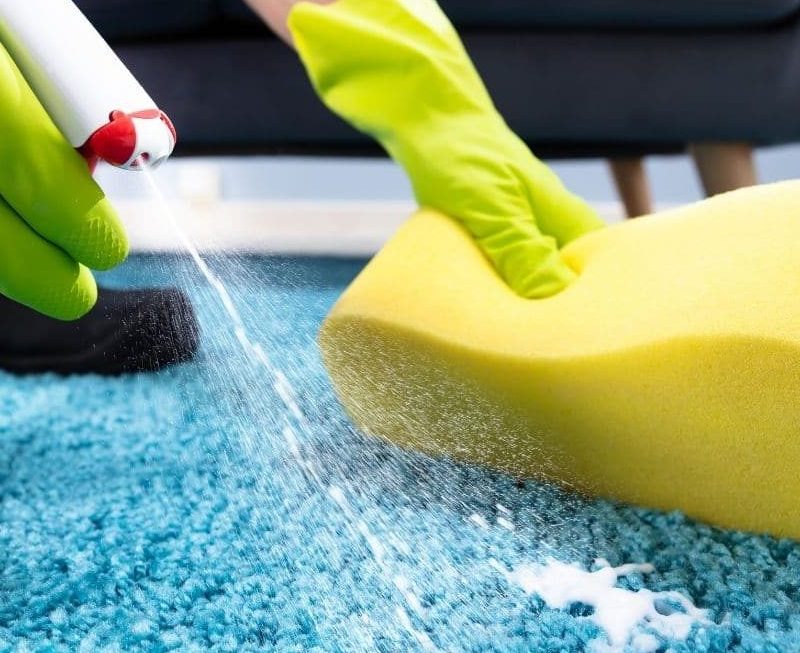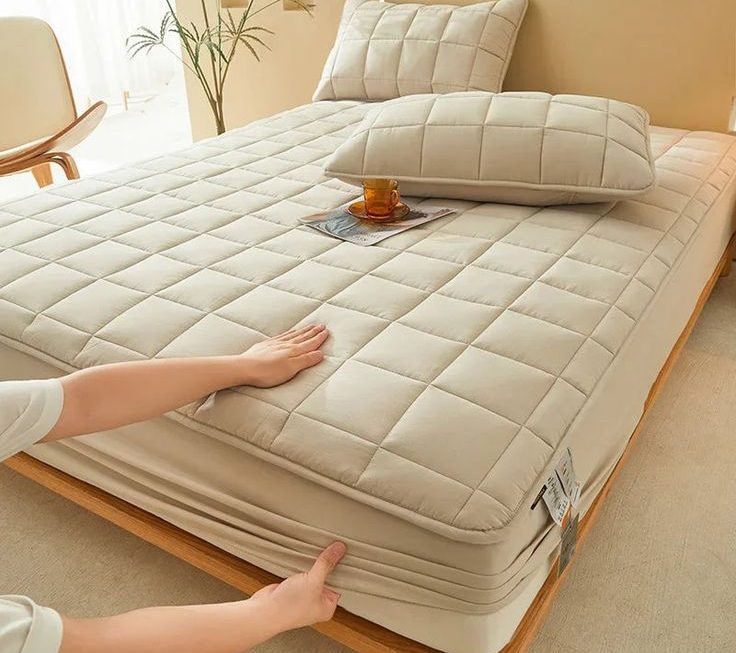Vomit stains can be a nasty surprise on your carpet, but with the right approach, you can effectively remove them without leaving behind any lingering odors or stains. Here’s a step-by-step guide on how to tackle vomit stains and restore your carpet to its original condition.
Blotting
Blotting is a crucial step in removing vomit stains from your carpet. It helps to absorb the stain without spreading it, preventing further damage and making the cleaning process more effective.
Why Blotting is Important:
- Prevents spreading: Blotting helps to contain the stain, preventing it from spreading to other areas of the carpet.
- Absorbs moisture: Blotting removes excess moisture from the carpet fibers, reducing the risk of mold and mildew growth.
- Prepares for cleaning: Blotting removes the bulk of the stain, making it easier to apply cleaning solutions and remove any remaining residue.
How to Blot:
- Absorbent materials: Use clean, absorbent cloths, paper towels, or a clean, dry rag.
- Gentle pressure: Apply gentle pressure to the stain, blotting from the outside inward to prevent spreading.
- Avoid rubbing: Rubbing can force the stain deeper into the carpet fibers, making it more difficult to remove.
- Repeat as needed: Continue blotting until most of the vomit is absorbed.
By following these steps and tips, you can effectively use blotting to remove vomit stains from your carpet and prevent further damage. Remember, blotting is a crucial step in the cleaning process, so take your time and be thorough.

Act Quickly
The sooner you address the vomit stain, the easier it will be to remove. The longer the stain sits, the more it can set and become harder to clean.
Blot, Don’t Rub
Avoid rubbing the vomit into the carpet fibers, as this can spread the stain and make it more difficult to remove. Instead, use a clean, absorbent cloth or paper towels to blot up as much of the vomit as possible. Work from the outside of the stain inward to prevent spreading.
Pre-Treat the Stain
Once you’ve blotted up the majority of the vomit, apply a pre-treatment solution to the stain. You can use a commercial carpet cleaner or create your own solution using a combination of white vinegar and water. Mix equal parts of white vinegar and water in a spray bottle, then apply the solution liberally to the stain. Allow the solution to sit for a few minutes before proceeding to the next step.
Use a Carpet Cleaning Solution
After pre-treating the stain, apply a carpet cleaning solution. You can use a commercial carpet cleaner or make your own solution using a combination of baking soda and water. Mix a tablespoon of baking soda with a cup of warm water to create a paste. Apply the paste to the stain and let it sit for a few minutes before scrubbing gently with a soft-bristled brush.
Rinse Thoroughly
Once you’ve scrubbed the stain, rinse the area thoroughly with clean water. Use a clean, absorbent cloth to blot up any excess water.
Deodorize
To eliminate any lingering odors, sprinkle baking soda over the area and let it sit for several hours. The baking soda will absorb the odors and help to deodorize the carpet. Vacuum up the baking soda once it has had time to work.
Air Out the Room
After cleaning the vomit stain, open the windows or doors to allow the room to air out. This will help to eliminate any remaining odors and prevent mold or mildew growth.

Scrubbing
While blotting is generally recommended for removing vomit stains from carpet due to its effectiveness in avoiding spreading the stain, gentle scrubbing can sometimes be necessary to remove stubborn stains or embedded particles.
When to Scrub:
- Stubborn stains: If the stain persists after blotting and pre-treatment, gentle scrubbing can help to loosen any remaining particles and remove the stain.
- Embedded particles: If there are visible particles, such as food or debris, embedded in the carpet fibers, scrubbing can help to remove them.
How to Scrub:
- Soft-bristled brush: Use a soft-bristled brush, such as a toothbrush or a small carpet brush, to gently scrub the stain.
- Circular motions: Scrub in circular motions to avoid damaging the carpet fibers.
- Avoid excessive force: Apply gentle pressure to avoid damaging the carpet.
Important Considerations:
- Pre-treatment: Always pre-treat the stain with a cleaning solution before scrubbing to soften the stain and make it easier to remove.
- Rinse thoroughly: After scrubbing, rinse the area thoroughly with clean water to remove any cleaning solution residue.
- Avoid harsh chemicals: Avoid using harsh chemicals that can damage the carpet fibers.
Additional Tips:
- For stubborn stains: If the stain is particularly stubborn, you may need to repeat the pre-treatment and scrubbing process several times.
- Professional cleaning: For extremely stubborn stains or large areas of carpet, consider consulting a professional carpet cleaner who has specialized equipment and cleaning solutions.
By following these guidelines, you can effectively use scrubbing to remove vomit stains from your carpet while minimizing the risk of damage. Remember to always use gentle pressure and avoid excessive scrubbing to prevent damaging the carpet fibers.
Tips for Removing Vomit Stains:
- Wear gloves to protect your hands from bacteria and unpleasant odors.
- Avoid using harsh chemicals that can damage the carpet fibers.
- Test any cleaning solution on a small, inconspicuous area of the carpet before using it on the stain.
- If the stain persists, you may need to consult a professional carpet cleaner.
Drying
Once you’ve successfully removed the vomit stain from your carpet using the methods described in the previous sections, it’s important to dry the area thoroughly to prevent mold and mildew growth. Here are some tips for drying your carpet:
Air Circulation:
- Open windows and doors: Increase air circulation in the room by opening windows or doors to allow fresh air to circulate.
- Fans: Use fans to speed up the drying process. Position fans near the affected area to circulate air.
Avoid Foot Traffic:
- Restrict access: Keep people and pets away from the area until the carpet is completely dry to prevent the stain from spreading or becoming more difficult to remove.
Consider a Dehumidifier:
- For humid environments: If your home has high humidity, consider using a dehumidifier to help remove excess moisture from the air and speed up the drying process.
Baking Soda for Odor Control:
- Odor absorption: After the carpet is dry, sprinkle baking soda over the area to absorb any lingering odors. Let it sit for several hours before vacuuming it up.
Additional Tips:
- Avoid direct sunlight: While sunlight can help to dry the carpet, it can also cause the carpet fibers to fade. Avoid exposing the affected area to direct sunlight for extended periods
- Professional cleaning: For stubborn stains or large areas of carpet, consider consulting a professional carpet cleaner who can use specialized equipment to extract moisture and ensure complete drying.
By following these steps, you can effectively dry your carpet after cleaning a vomit stain and prevent any potential damage or odor issues.

Additional Tips for Cleaning Vomit Stains:
- For pet vomit: If your pet is the culprit, clean up the vomit as soon as possible to prevent your pet from associating the carpet with negative experiences. Consider using a pet-safe enzymatic cleaner to break down the odor-causing bacteria.
- For human vomit: If the vomit is from a person who is ill, be sure to wear gloves and disinfect any surfaces that may have come into contact with the vomit.
- For vomit stains on upholstery: Follow similar steps to remove vomit stains from upholstery, but be sure to use a cleaning solution that is safe for the fabric.
By following these steps and tips, you can effectively remove vomit stains from your carpet and restore it to its original condition. Remember, the key to successful stain removal is to act quickly and use the appropriate cleaning methods.



